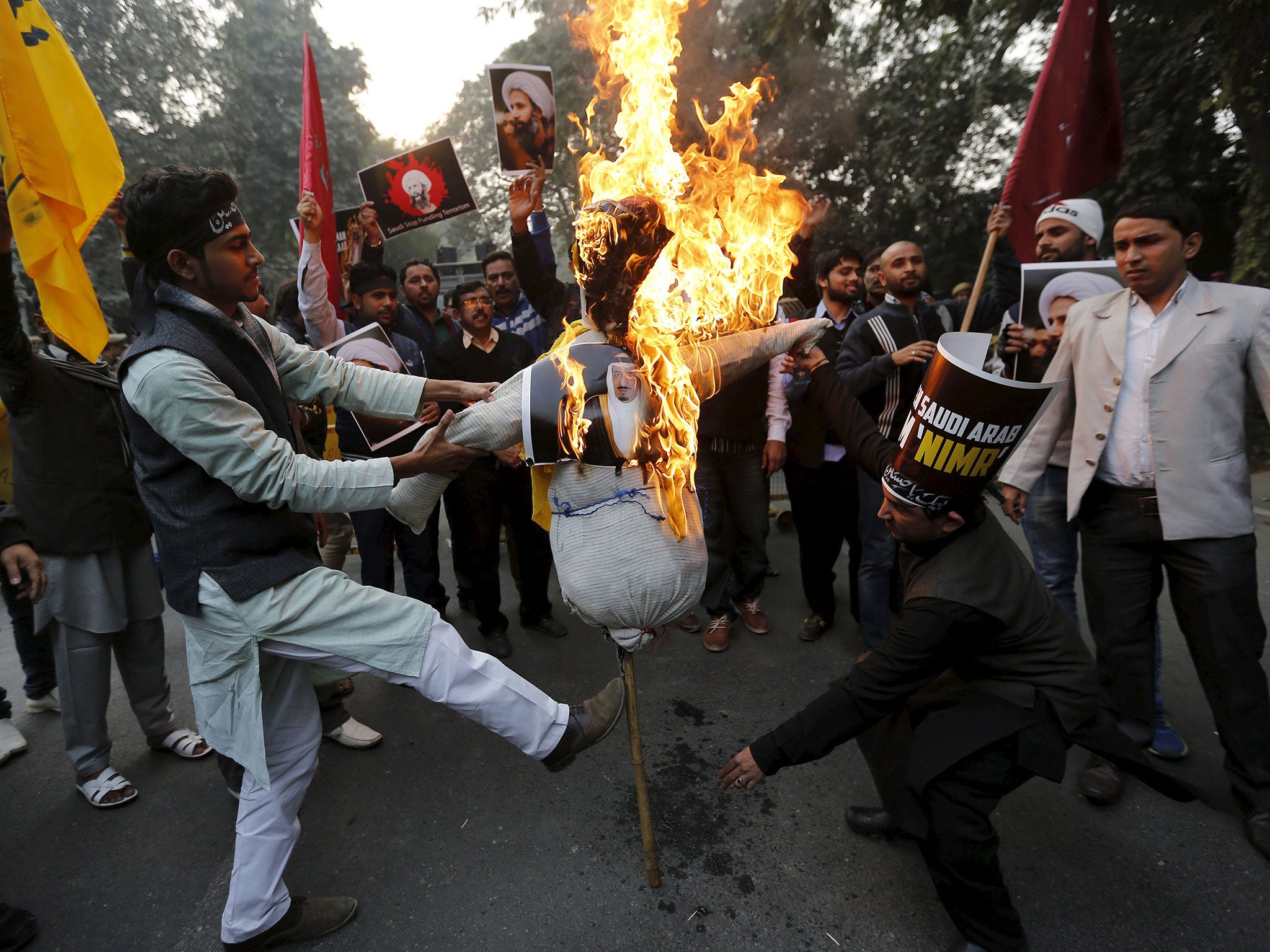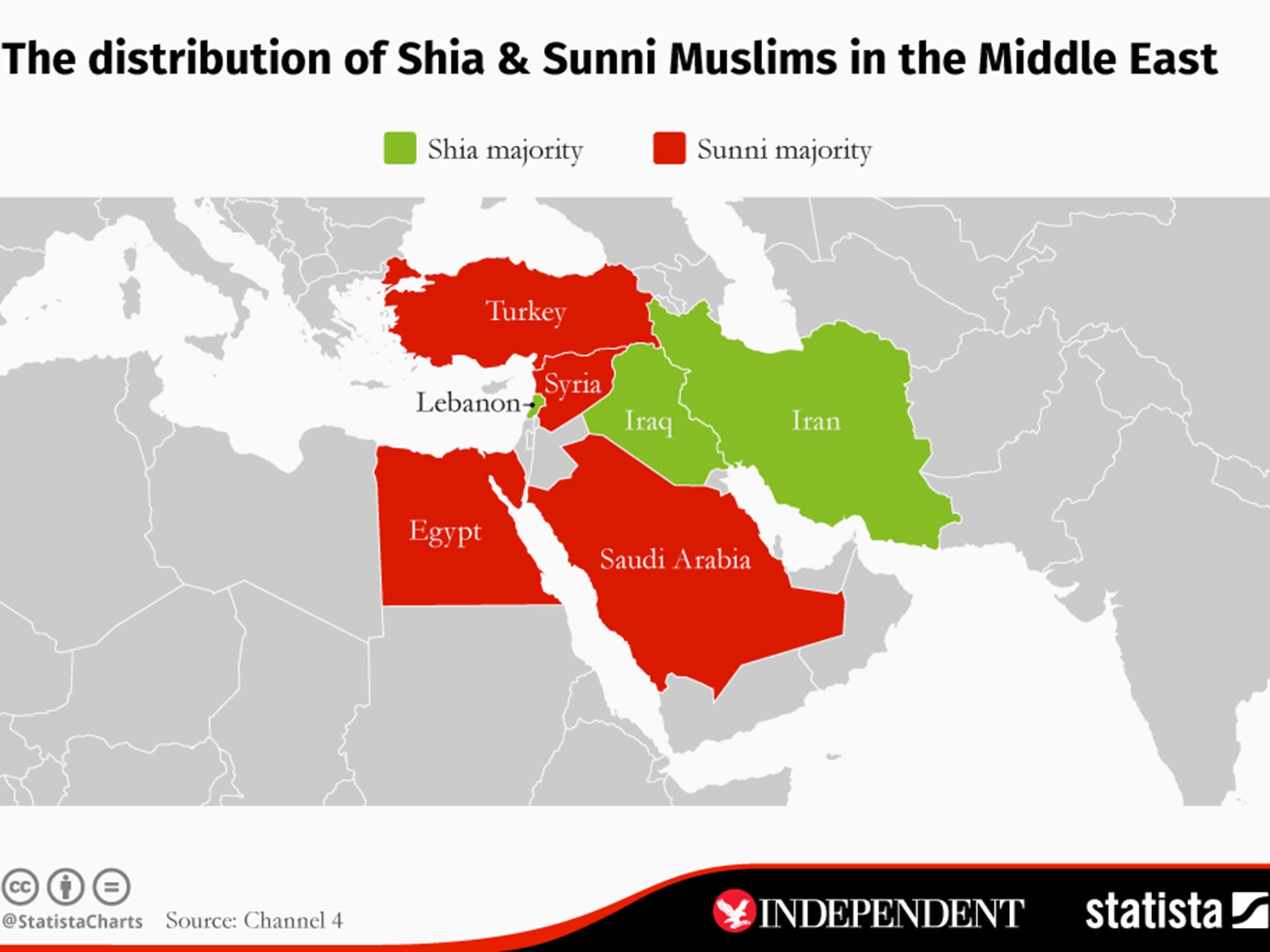The Middle East divide between Sunni and Shia explained in one map
The execution of a Shia cleric in Saudi Arabia has split the Middle East along sectarian lines

The execution of 47 people in Saudi Arabia has ignited an already tense situation across the Middle East, splitting the region along sectarian lines.
What has caused such outrage among the kingdom’s near neighbours is not simply the number killed, but the fact they included the prominent Shia cleric Sheikh Nimr al-Nimr.
The backlash has been split along sectarian lines, with Saudi Arabia and its Sunni government-led allies Sudan, Kuwait, Bahrain and the UAE severing diplomatic ties to Iran.

What’s the geographical split?
The majority of the world’s Muslims are Sunni, between 85 and 90 per cent according to most counts, and spread across Africa, the Middle East and Asia.
Iran, Iraq, Azerbaijan and Bahrain have a Shia majority, though the latter is ruled by the Sunni House of Khalifa.
In Yemen, the conflict has become a sectarian proxy war, with Iran backing the Shia Houthi rebels who overthrew the country’s Sunni-dominated government, while a Saudi-led coalition has since intervened to reinstall the Sunni leadership.
What caused the divide?
The Sunni-Shia conflict is 1,400 years in the making, dating back to the years immediately after the Prophet Mohammed’s death in 632.
The arguments are complicated but essentially boil down to the fact that Sunni’s believe the Prophets’ trusted friend and advisor Abu Bakr was the first rightful leader of Muslims or “caliph”, while Shias believe that Mohammed’s cousin and son-in-law Ali was chosen by Allah to hold the title.
Read more here.
Join our commenting forum
Join thought-provoking conversations, follow other Independent readers and see their replies
0Comments